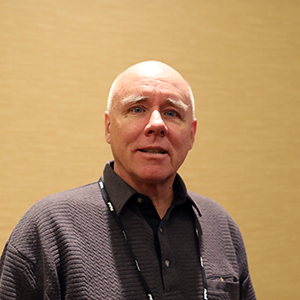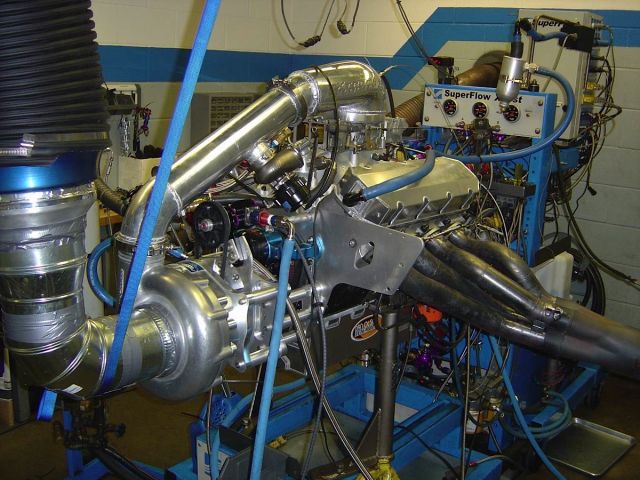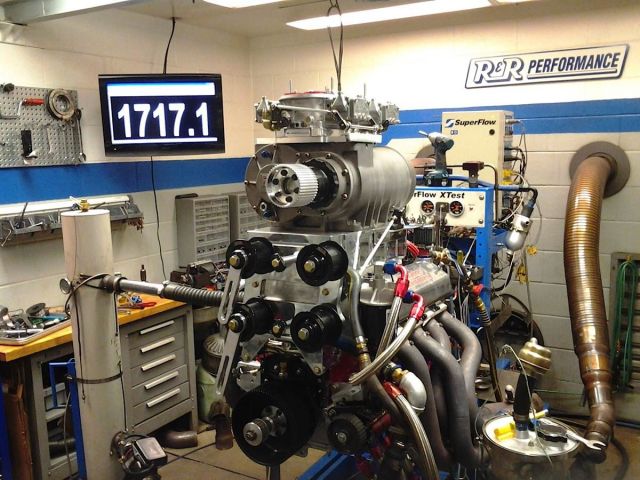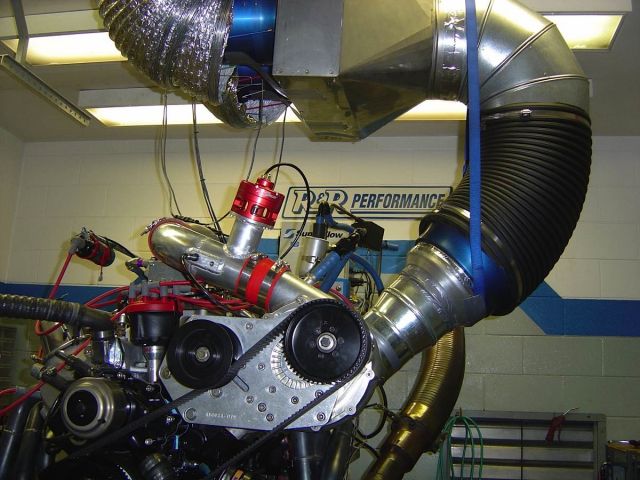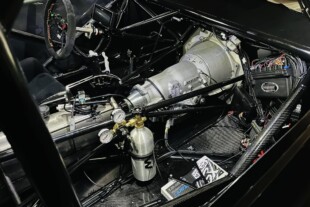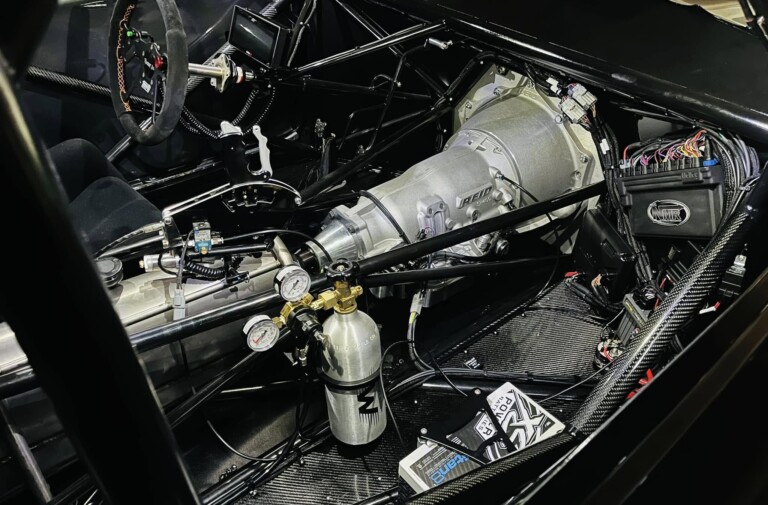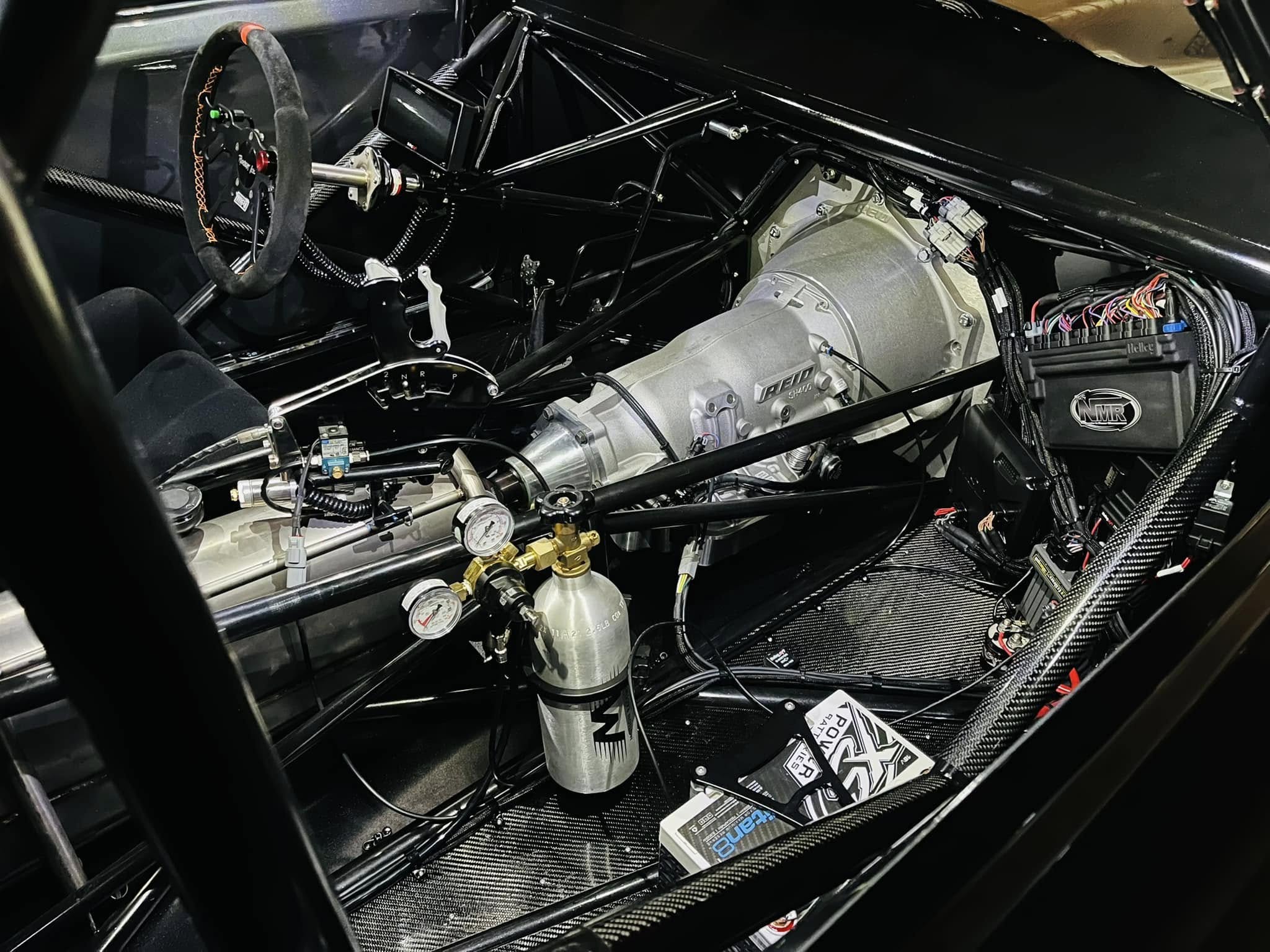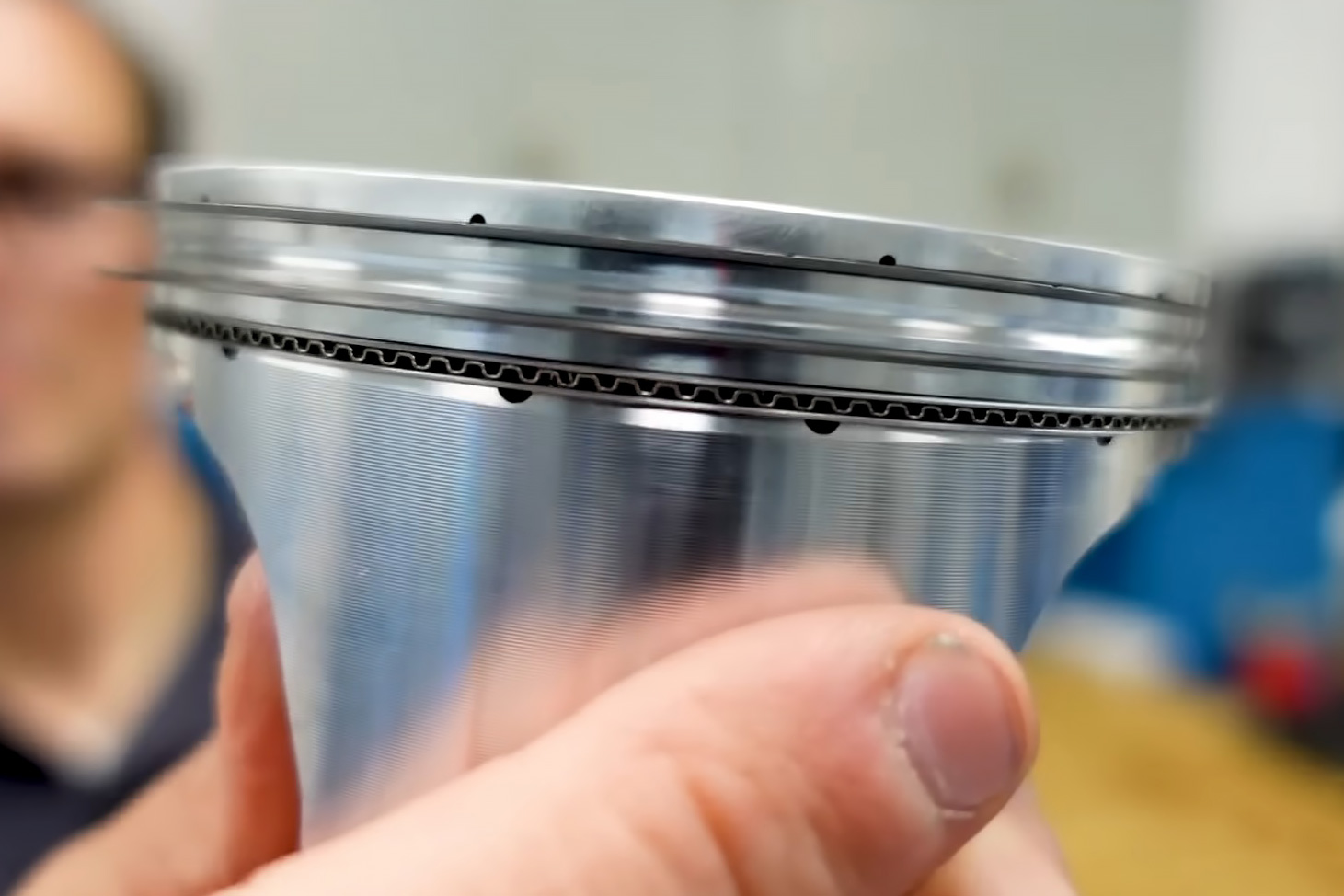Ron Quarnstrom at R&R Performance recently dyno tested engine number 7,800. Averaging more than 400 engines a year, the Minnesota-based shop can easily claim to be one of the country’s busiest engine shops. And he doesn’t just test car engines. He’s had a 13-horsepower Perkins diesel hooked up the Superflow dyno, and he’s also tested chainsaw engine for a competitive two-man cutting crew. He’s even been approached to test a Chrysler A57 30-cylinder tank engine. The engine, which is basically five inline 6-cylinder engines operating off a common crankshaft, would have been too large to fit through the shop’s door. If and when the engine is ready for testing, Ron plans to park the engine outside the shop and devise some type of driveshaft to reach the water brake.
Some recent engines on the shop include a 572ci blown big-block Chevy designed for a boat, a 359ci Ford Windsor with an F2 ProCharger and a nasty looking 565ci big-block Chevy with an F3 ProCharger. More details follow:
The boat engine features a PSI Screwcharger and a 5–inch thick air-to-water intercooler. Ron says the air coming out of the supercharger is 268F and 93F going into the intake.
“It’s a marine application, so they have the whole lake to cool down the air,” says Ron.
Two of these beasts will power the 41-foot Black Thunder V-hull boat. The engine dyno’d out 1,717 horsepower with 1,368 lb-ft of torque on 22 pounds of boost. When hooked up the dyno, the engine stood 6-foot-4 to the bottom of the air cleaner. Both engines were built by the boat’s owner, Dennis Parvey.
The Windsor (photo with the black air-inlet hose) doesn’t have an intercooler but runs on E85. Inlet air temperature is 302F but under the CSU 4150 carb it’s 115 degrees. Naturally aspirated it made 522 horsepower but with just under 30 pounds of boost it made 1,364 horsepower 7,300 rpm with 981 lb-ft peak torque. Ron reports that air consumption is 1,968 CFM and 1,025 pounds of fuel per hour! The engine was built by Bryan Hansen in the R&R machine shop.
The other big block with the front-drive F3, also built by Hansen, runs on methanol. Naturally aspirated it made 787 horsepower, and with 23 pounds of boost at 6,500 RPM the dyno hit 1,934 horsepower with 1,538 lb-ft torque. Again, Ron says an intercooler isn’t required, thanks to the methanol and carb booster spray.
EngineLabs wants to hear from engine shop all across the country. Tell us about your latest engine build, or send us a useful tech tip. Show us a new tool you have, or how you solved a unique problem. Send your photos and a brief description of the engine to EngineLabs@PowerAutomedia.com. Be sure to include the shop’s name and phone number.


